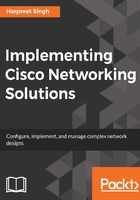
Interdependency between the various components
We have discussed the major functional blocks of the IT infrastructure within an organization, with each functional block performing a specific set of functions and providing specific capabilities to the overall network. The capabilities of the network as a whole will be determined by the capabilities of each block, and will depend upon the way the functions are implemented in each block. Since the blocks connect to each other and handover traffic to each other, the end-to-end capabilities of the network will also depend upon the manner in which these functions are handled and if they are compatible with the other blocks in the network.
As an example, the campus access block marked the traffic for providing differentiated services and a certain quality of service to selected applications. If these markings are not coherent across the WAN block, where the bandwidth is the lowest, and the chances of congestion are the highest, then the end-to-end quality of service will not meet user requirements.
Let's consider another example of the interdependencies between the different blocks. If there is a security threat detected by the internet block, and it is found that a particular host or IP address is sending malicious traffic towards the internet because of a possible malware, the host needs to be isolated from the network so that the malware does not spread to other hosts on the network. Hence, the threat is detected at the internet block, but needs to be acted upon at the campus network or network access block.
The end-to-end capabilities of the network will be as desired if, and only if, the network blocks are designed and implemented coherently considering the functions performed at each block.
Let's consider this from a bandwidth sizing perspective. The following figure shows the functional blocks and the traffic flows:

The campus network provides access to the end users, and the port speeds at the access are typically 1Gbps per port. For a 1000 user network, the total access bandwidth provisioned is 1 * 1000 = 1000 Gbps. It would be impractical to consider 1000 Gbps of bandwidth all the way into the DC. A lot of factors such as oversubscription, the user mix of wired and wireless, and the types of applications need to be factored while designing the network at the access. This sizing would then have implications on the WAN bandwidth that is provisioned to carry the traffic from the campus or branch into the data center. Similarly, the traffic analysis has to be done for the servers in the DC, and the type of traffic that would flow to the end users and between the servers itself, from a data synchronization and replication perspective. All these sizing considerations have to be coherent to ensure an end-to-end user experience. We will get into the details of the sizing as we discuss the design of the various blocks in the subsequent chapters.